Mazda CX-30 VS Lexus UX – Specs, Efficiency & Price Comparison
Which model is the better choice – the Mazda CX-30 or the Lexus UX? We compare performance (186 HP vs 204 HP), boot capacity (430 L vs 367 L), efficiency (5.70 L vs 16.70 kWh5 L), and of course, the price (25200 £ vs 37500 £).
Find out now which car fits your needs better!
The Mazda CX-30 (SUV) is powered by a Petrol MHEV engine and comes with a Manuel or Automatic transmission. In comparison, the Lexus UX (SUV) features a Electric or Full Hybrid engine and a Automatic gearbox.
When it comes to boot capacity, the Mazda CX-30 offers 430 L, while the Lexus UX provides 367 L – depending on what matters most to you. If you’re looking for more power, you’ll need to decide whether the 186 HP of the Mazda CX-30 or the 204 HP of the Lexus UX suits your needs better.
There are also differences in efficiency: 5.70 L vs 16.70 kWh5 L. In terms of price, the Mazda CX-30 starts at 25200 £, while the Lexus UX is available from 37500 £.
Compare all the key specs now and find out which model fits your lifestyle best!
In a head-to-head comparison between the Lexus UX and the Mazda CX-30, both models stand out in the competitive compact crossover segment, yet they cater to different priorities. The Lexus UX excels with its luxurious interior and top-notch safety features, making it a desirable choice for those seeking refinement. On the other hand, the Mazda CX-30 offers a more spirited driving experience, thanks to its agile handling and peppy engine options, appealing to drivers who prioritize performance and style.
Mazda CX-30
The Mazda CX-30 effortlessly combines sleek design with a sense of adventure, making it an appealing choice for urban explorers and countryside enthusiasts alike. Inside, the cabin is thoughtfully designed, offering both comfort and cutting-edge technology to enhance the driving experience. Its performance on the road is agile, providing a smooth and engaging journey for drivers and passengers.
details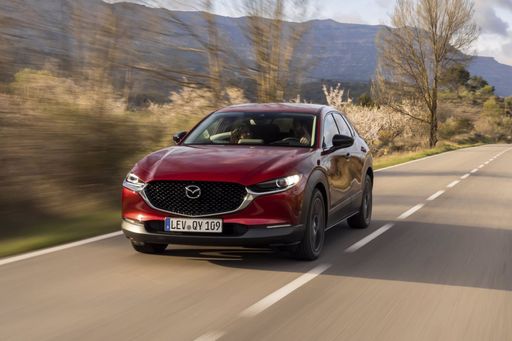 @ de.mazda-press.com
@ de.mazda-press.com
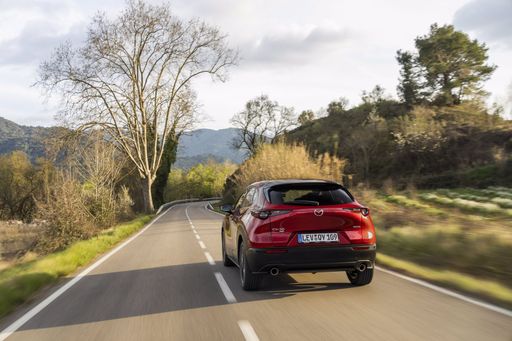 @ de.mazda-press.com
@ de.mazda-press.com
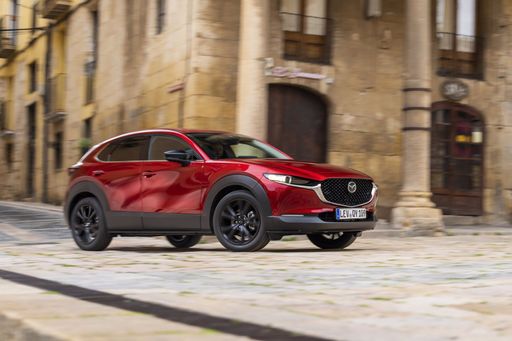 @ de.mazda-press.com
@ de.mazda-press.com
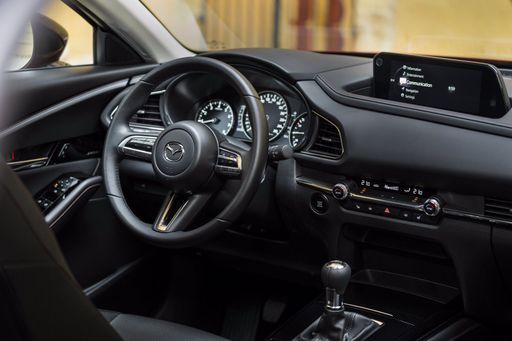 @ de.mazda-press.com
@ de.mazda-press.com
Lexus UX
The Lexus UX is a compact SUV that effortlessly blends sleek design with urban agility, making it a perfect choice for city driving. Its interior is thoughtfully crafted, offering both comfort and sophistication with high-quality materials and advanced technology features. This vehicle provides a smooth and refined driving experience, making it both a practical and stylish option for modern motorists.
details @ toyota-media.de
@ toyota-media.de
 @ toyota-media.de
@ toyota-media.de
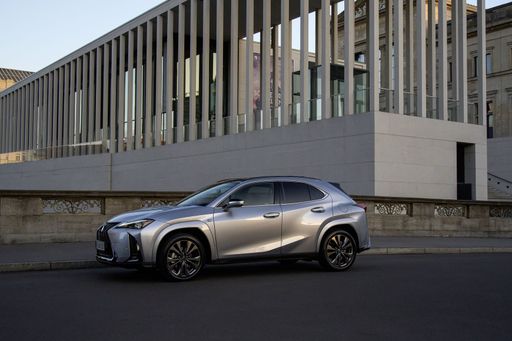 @ toyota-media.de
@ toyota-media.de
 @ toyota-media.de
@ toyota-media.de
Lexus UX vs. Mazda CX-30: A Sophisticated Showdown in the Compact SUV Arena
The compact SUV segment has grown increasingly competitive, offering a diverse range of options for city dwellers and adventurers alike. Among the top contenders in this category are the Lexus UX and the Mazda CX-30. These models offer unique blends of style, performance, and innovation, catering to varying tastes and preferences. In this article, we delve into the features that set these two vehicles apart and highlight their technical strengths.
Design and Dimensions
The Lexus UX and the Mazda CX-30 share the SUV body type but express distinct design philosophies. The Lexus UX boasts a more modern, urban styling with dimensions of 4,495 mm in length, 1,840 mm in width, and 1,545 mm in height. This design emphasizes a sleek, aerodynamic silhouette that aligns with its reputation for luxury.
In contrast, the Mazda CX-30 exudes Mazda's Kodo design language, which blends elegance with a sporty demeanor. At 4,395 mm in length, 1,795 mm in width, and 1,540 mm in height, the CX-30 is slightly more compact, making it easier to navigate tight city streets while maintaining a dynamic stance.
Engine Performance and Efficiency
Lexus UX offers a choice between electric and full-hybrid engine types. The electric variant produces 204 HP with a seamless Reduction Gearbox transmission, while the hybrid option offers 199 HP with a CVT transmission. Both models are available in front-wheel drive and all-wheel drive configurations, prioritizing efficiency with consumption figures of 5-5.6 L/100 km for the hybrid and 16.7 kWh/100 km for the electric version. The electric UX achieves an impressive range of 449 km.
The Mazda CX-30, on the other hand, is powered by a petrol mild-hybrid engine with outputs ranging from 140 HP to 186 HP. It provides both manual and automatic gearbox options, appealing to traditional driving enthusiasts and those seeking a more leisurely driving experience. The CX-30 impresses with slightly higher fuel consumption rates of 5.7-6.6 L/100 km but compensates with a robust maximum speed of up to 204 km/h, perfect for highway excursions.
Interior Comfort and Practicality
Inside, the Lexus UX is optimized for luxury and comfort, offering a plush cabin with seating for four. Despite its focus on high-end experiences, the UX provides practical features like a trunk capacity of 283-367 L, catering to urban escapades or minimalist adventure trips.
The Mazda CX-30 expands on passenger accommodation with seating for five, making it ideal for families. The CX-30 also offers a larger trunk capacity of 422-430 L, granting extra space for luggage and equipment, which is advantageous for longer journeys.
Safety and Technological Innovations
Both models deploy state-of-the-art safety features, but each brand has distinct technological highlights. Lexus equips the UX with advanced driver assistance systems and connectivity features that align with their commitment to innovation and luxury.
Mazda integrates the CX-30 with intuitive systems that enhance the driving experience while ensuring safety. The integration of mild-hybrid technology in Mazda's engine further exemplifies its commitment to blending performance with ecological mindfulness.
Conclusion
The Lexus UX and Mazda CX-30 offer exciting alternatives for compact SUV buyers. The Lexus UX appeals to those prioritizing luxury and electrified innovation, while the Mazda CX-30 captures the essence of spirited driving with a larger cabin and sporty elegance. Ultimately, the choice between these two depends on whether the buyer values a cutting-edge urban experience or the allure of a balanced, spirited drive.

|

|
|
|
|
Costs and Consumption |
|
|---|---|
|
Price
25200 - 36800 £
|
Price
37500 - 53600 £
|
|
Consumption L/100km
5.7 - 6.6 L
|
Consumption L/100km
5 - 5.6 L
|
|
Consumption kWh/100km
-
|
Consumption kWh/100km
16.70 kWh
|
|
Electric Range
-
|
Electric Range
450 km
|
|
Battery Capacity
-
|
Battery Capacity
-
|
|
co2
129 - 148 g/km
|
co2
0 - 127 g/km
|
|
Fuel tank capacity
48 - 51 L
|
Fuel tank capacity
43 L
|
Dimensions and Body |
|
|---|---|
|
Body Type
SUV
|
Body Type
SUV
|
|
Seats
5
|
Seats
5
|
|
Doors
5
|
Doors
5
|
|
Curb weight
1455 - 1587 kg
|
Curb weight
1495 - 1875 kg
|
|
Trunk capacity
422 - 430 L
|
Trunk capacity
283 - 367 L
|
|
Length
4395 mm
|
Length
4495 mm
|
|
Width
1795 mm
|
Width
1840 mm
|
|
Height
1540 mm
|
Height
1540 - 1545 mm
|
|
Payload
458 - 496 kg
|
Payload
370 - 615 kg
|
Engine and Performance |
|
|---|---|
|
Engine Type
Petrol MHEV
|
Engine Type
Electric, Full Hybrid
|
|
Transmission
Manuel, Automatic
|
Transmission
Automatic
|
|
Transmission Detail
Schaltgetriebe, Automatikgetriebe
|
Transmission Detail
-
|
|
Drive Type
Front-Wheel Drive, All-Wheel Drive
|
Drive Type
Front-Wheel Drive, All-Wheel Drive
|
|
Power HP
140 - 186 HP
|
Power HP
199 - 204 HP
|
|
Acceleration 0-100km/h
8.3 - 10.3 s
|
Acceleration 0-100km/h
7.5 - 8.1 s
|
|
Max Speed
191 - 204 km/h
|
Max Speed
160 - 177 km/h
|
|
Torque
238 - 240 Nm
|
Torque
300 Nm
|
|
Number of Cylinders
4
|
Number of Cylinders
4
|
|
Power kW
103 - 137 kW
|
Power kW
146 - 150 kW
|
|
Engine capacity
1998 - 2488 cm3
|
Engine capacity
1987 cm3
|
General |
|
|---|---|
|
Model Year
2024
|
Model Year
2023 - 2024
|
|
CO2 Efficiency Class
D, E
|
CO2 Efficiency Class
A, C, D
|
|
Brand
Mazda
|
Brand
Lexus
|
Mazda CX-30
The Mazda CX-30: Where Innovation Meets Efficiency
The Mazda CX-30 stands as a testament to Mazda's commitment to blending the best of technology and design. Positioned as a subcompact SUV, the CX-30 delivers the practicality of an SUV with the agile driving dynamics of a smaller vehicle. As we delve into its technical and innovative aspects, the CX-30 showcases why it's a formidable choice in today's competitive automotive market.
Engine and Performance: Power Meets Efficiency
The heart of the Mazda CX-30 lies in its sophisticated engine offerings. At its core, the e-SKYACTIV-X engines provide a unique balance of performance and fuel efficiency. With 186 PS at your disposal, these engines optimise the combustion process, reducing both fuel consumption and emissions. The engine's mild-hybrid system further enhances its efficiency by capturing energy during braking, making it one of the more environmentally conscious choices on the market.
Transmission and Drivetrain Options
Buyers have the flexibility to choose between a manual or an automatic transmission, catering to diverse driving preferences. The available all-wheel drive (AWD) system provides enhanced stability and control, particularly useful in variable weather conditions or challenging terrains. Those preferring a classic driving experience can opt for the front-wheel drive (FWD) variants, which still deliver impressive traction and handling.
Design and Dimensions
The Mazda CX-30's dimensions—4395 mm in length and 1795 mm in width—offer a spacious and comfortable interior while maintaining a sleek and modern exterior design. Its aerodynamic form not only enhances its aesthetic appeal but also contributes to improved performance and fuel efficiency. The interior, adorned with high-quality materials, reflects Mazda’s dedication to creating a premium driving experience.
Interior Comfort and Technology
Inside, the CX-30 does not disappoint. With a cabin that seats five comfortably, it strikes an excellent balance between style and practicality. The infotainment system, replete with intuitive controls and connectivity options, ensures that drivers remain connected and entertained on the go. Additionally, advanced safety features bolster the confidence of any journey, safeguarding occupants and pedestrians alike.
Pricing and Model Variants
The Mazda CX-30 is offered in a variety of model configurations, each catering to different budgetary and feature preferences. The entry-level models provide excellent value, while higher trims, such as the Exclusive-Line and Takumi, offer luxurious enhancements and additional technology features. With pricing from €28,940 to €42,390, the CX-30 positions itself as an attractive option in its segment.
Conclusion: The Ideal Mix of Performance and Practicality
In summary, the Mazda CX-30 emerges as a versatile and appealing option for those seeking a compact SUV that does not compromise on performance or sophisticated engineering. Its combination of innovative technology, efficient powertrains, and driver-centric features make it a worthy contender in its class. Whether navigating urban landscapes or exploring rural roads, the CX-30 delivers an engaging and reassuring drive.
Lexus UX
Introducing the Lexus UX: A Modern Marvel on Wheels
In the competitive world of compact luxury SUVs, the Lexus UX stands out with its striking design and cutting-edge technology. As we delve into the intricate details of this vehicle, from its powertrains to its innovative features, the Lexus UX proves to be a formidable contender in its class.
Powertrain Options: Electric Efficiency Meets Hybrid Harmony
The Lexus UX offers drivers a choice between full electric and hybrid powertrains, catering to both eco-conscious consumers and those seeking traditional performance.
The electric variant, designated as UX 300e, boasts a powerful electric motor generating 150 kW, translating to a robust 204 PS. This model offers an impressive range of 449 km on a single charge, thanks to its 72.8 kWh battery, with a consumption rate of 16.7 kWh/100 km.
Meanwhile, the hybrid models, labelled UX 300h, combine a 2.0-litre petrol engine with an electric motor, resulting in a combined output of 199 PS. These hybrids offer fuel efficiency with consumption figures ranging from 5 to 5.6 L/100km, depending on the drivetrain configuration.
Driving Dynamics: Comfort and Precision Handling
Lexus has designed the UX with a focus on refining the driving experience. Both the electric and hybrid versions offer front-wheel-drive, while the hybrid model also features an all-wheel-drive option, providing enhanced traction and stability.
Automatic transmission systems come standard in the form of a reduction gear for the electric variant and a CVT gearbox for the hybrid. This ensures smooth and responsive shifts, enhancing the overall driving pleasure.
Innovative Features and Advanced Technology
The Lexus UX is equipped with a suite of advanced features designed to make driving safer and more enjoyable. The interior boasts the latest infotainment system, ensuring connectivity with integrated navigation and premium audio systems.
Customers can choose from various packages, including the Executive Line and F Sport Design, which offer a range of premium materials and amenities to elevate the in-car experience.
Furthermore, the UX series prioritises safety, earning high marks with its array of driver assistance systems, such as adaptive cruise control, lane-keeping assist, and pre-collision systems.
Sleek Design Meets Practicality
The exterior design of the Lexus UX is a blend of boldness and elegance. Its compact dimensions, with a length of 4495 mm, make it agile in urban environments while maintaining a commanding presence on the road.
Practicality is not sacrificed for style; with a boot capacity ranging from 283 to 367 litres, the Lexus UX offers ample storage space, making it ideal for both daily commutes and weekend getaways.
Conclusion: The Lexus UX - A Forward-Thinking Choice
The Lexus UX is a testament to the brand's commitment to innovation, offering a harmonious blend of performance, efficiency, and luxury. With its competitive pricing starting at €43,700, the UX series caters to a wide audience, offering both eco-friendly and performance-oriented options. It stands as a remarkable representation of modern automotive engineering, ready to meet the demands of discerning drivers.
The prices and data displayed are estimates based on German list prices and may vary by country. This information is not legally binding.
